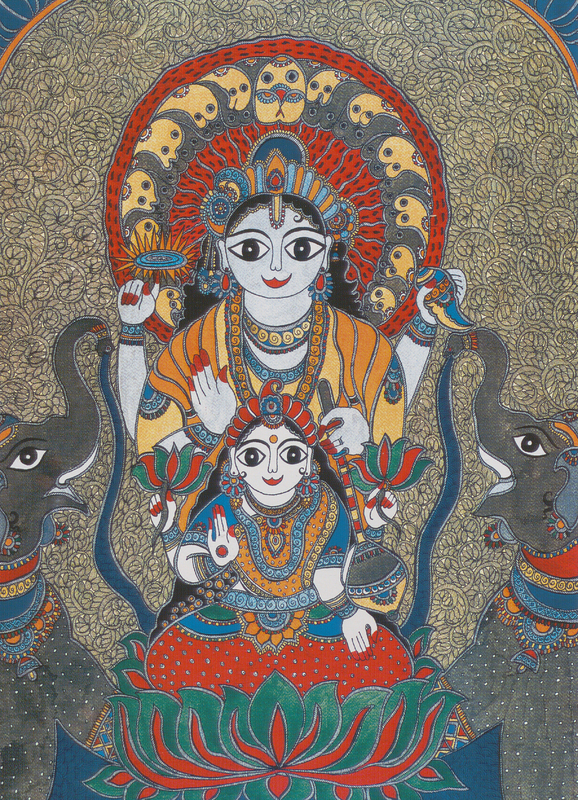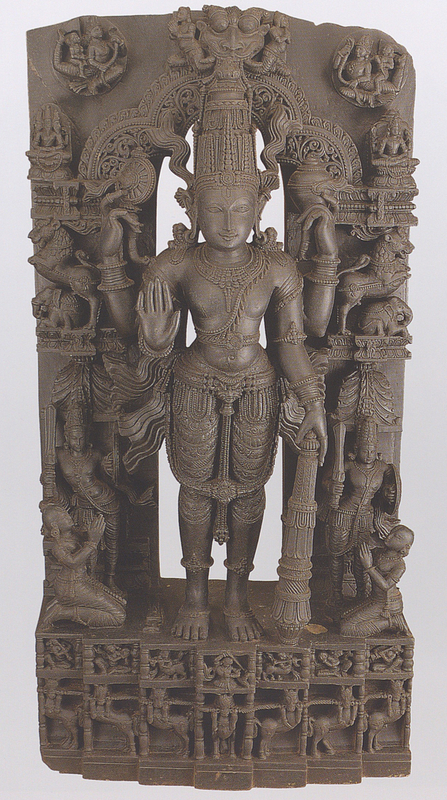Vishnu
In our desire for the welfare of the worlds, we shall set a task for you, Vishnu. [...] Vishnu, you must kill Ravana in battle, that mighty thorn in the side of the world.
— "Boyhood" 14.15-14.20
Vishnu's involvement in the Ramayana begins before Rama is even born. When the gods realize that the rakshasa Ravana can only be stopped by a mortal, not a deity, Vishnu is called upon to take form as a mortal man. This is a perfect task for Vishnu, known as the protector. He chooses to take shape as the four sons of King Dasaratha, an honorable ruler.
As is destined, Rama, son of the king's first wife, is the strongest of the four brothers, taking a full half of Vishnu's essence. Bharata, son of the second wife, has a quarter. Twins Lakshmana and Sugriva, sons of the third wife, are left to share the remaining quarter — still a significant amount, considering the extent of Vishnu's powers.
It is important to recognize that Rama was not the first avatar, or incarnation, of Vishnu. The image above depicts the ten incarnations of Vishnu. Rama is the seventh, shown with his signature bow in the second image in the bottom row. Besides Rama, Vishnu famously takes the form of Krishna, a popular deity of love, in his eighth incarnation.

Lakshmi

